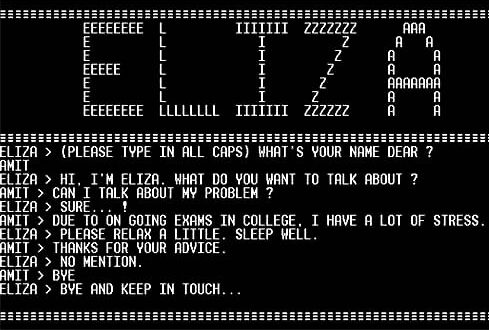
How does that make you feel?”
In the isolation of the COVID-19 pandemic, many people are missing a sympathetic ear. Would a response like that make you feel heard, less alone, even if it were a machine writing back to you?
The pandemic has contributed to chronic loneliness. Digital tools like video chat and social media help connect people who live or quarantine far apart. But when those friends or family members are not readily available, artificial intelligence can step in.
Millions of isolated people have found comfort by chatting with an AI bot. Therapeutic bots have improved users’ mental health for decades. Now, psychiatrists are studying how these AI companions can improve mental wellness during the pandemic and beyond.
How AI Became a Therapy Tool
Artificial intelligence systems are computer programs that can perform tasks that people would normally do, like translating languages or recognizing objects in images. AI chatbots are programs that simulate human conversation. They have become common in customer service because they can provide quick answers to basic questions.
The first chatbot was modeled on mental health practitioners. In 1966, computer scientist Joseph Weizenbaum created ELIZA, which he programmed to sound like a Rogerian psychotherapist. Rogerian approaches encouraged psychotherapists to ask open-ended questions, often mirroring patients’ phrases back to them to encourage the patients to elaborate. Weizenbaum did not expect that his psychotherapist-like AI could have any therapeutic benefit for users. Training ELIZA to translate users’ comments into questions was merely a practical, if not ironic, model for the AI’s dialogue.
Weizenbaum was amazed when his test subjects actually confided in ELIZA as they would a flesh-and-blood psychotherapist. Many study participants believed that they were sharing vulnerable thoughts with a live person. Some of these participants refused to believe that the seemingly attentive ELIZA, who asked so many questions during each conversation, was actually a computer.
However, ELIZA did not need to trick users to help them. Even Weizenbaum’s secretary, who knew that ELIZA was a computer program, asked for privacy so she could have her own personal conversations with the chatbot.
As mental wellness needs have changed over time, coders and therapists collaborate to build new AIs that can meet these new challenges.
The Digital Doctor Is In
How can a chatbot seem so human? If you were to dissect an AI, you would find algorithms and scripts: rules, essentially, that humans use to direct the AI’s behavior. With chatbots, coders train the AI to automatically produce certain phrases in response to a user’s message. Coders then work with writers to determine what kind of punctuation, emojis and other stylistic elements the bot will use.
These scripts ultimately provide a sense of the bot’s “attitude.” For example, a coder can train an AI to recognize the word “depressed” so that, whenever a user types a phrase like “I am feeling tired and depressed today,” the chatbot may respond with “I hear that you are feeling depressed. Can you explain why?” Or a writer may code the bot to produce a more colloquial tone: “Wow, I’m sorry you’re feeling this way. Why do you think you might be feeling depressed?”
These scripts replicate a common tactic in cognitive behavioral therapy: asking questions. AI therapy bots encourage people to vent frustrations and then ask them to more closely reflect on those experiences or emotions. Even when an AI’s responses are broad or unspecific, a patient may find the process of typing out their thoughts to someone – even an artificial “someone” – cathartic.
Who Benefits and How
Do chatbots actually work to relieve loneliness or anxiety? More research is needed, but it seems so. Several studies provide promising results. For example, young adults who regularly messaged a therapy chatbot reported less loneliness and anxiety than did their peers who did not use the AI. Elderly users may also benefit from communicating with chatbots, especially if those elders live alone or do not have regular contact with loved ones.
A chatbot’s therapeutic power – and its Achilles’ heel – is its script. The dialogue is predetermined, the same lines delivered to multiple users. These scripted responses allow a chatbot to communicate with numerous users simultaneously. Chatbots are especially helpful for people who want to express themselves quickly and anonymously, without judgment. Users can immediately pull up a chatbot to offload stress from their day when they may not want or be able to share such thoughts with family or friends.
However, these same scripts prevent AI from being a serious replacement for human therapists. AI bots respond to certain keywords, so they sometimes misunderstand users. When Vice tested the popular therapy app Woebot, the app produced a cringeworthy response.



More Stories
Diabetes Awareness is Important
Today’s News: March 26, 2024
The Greatest Purveyor of Violence In The World